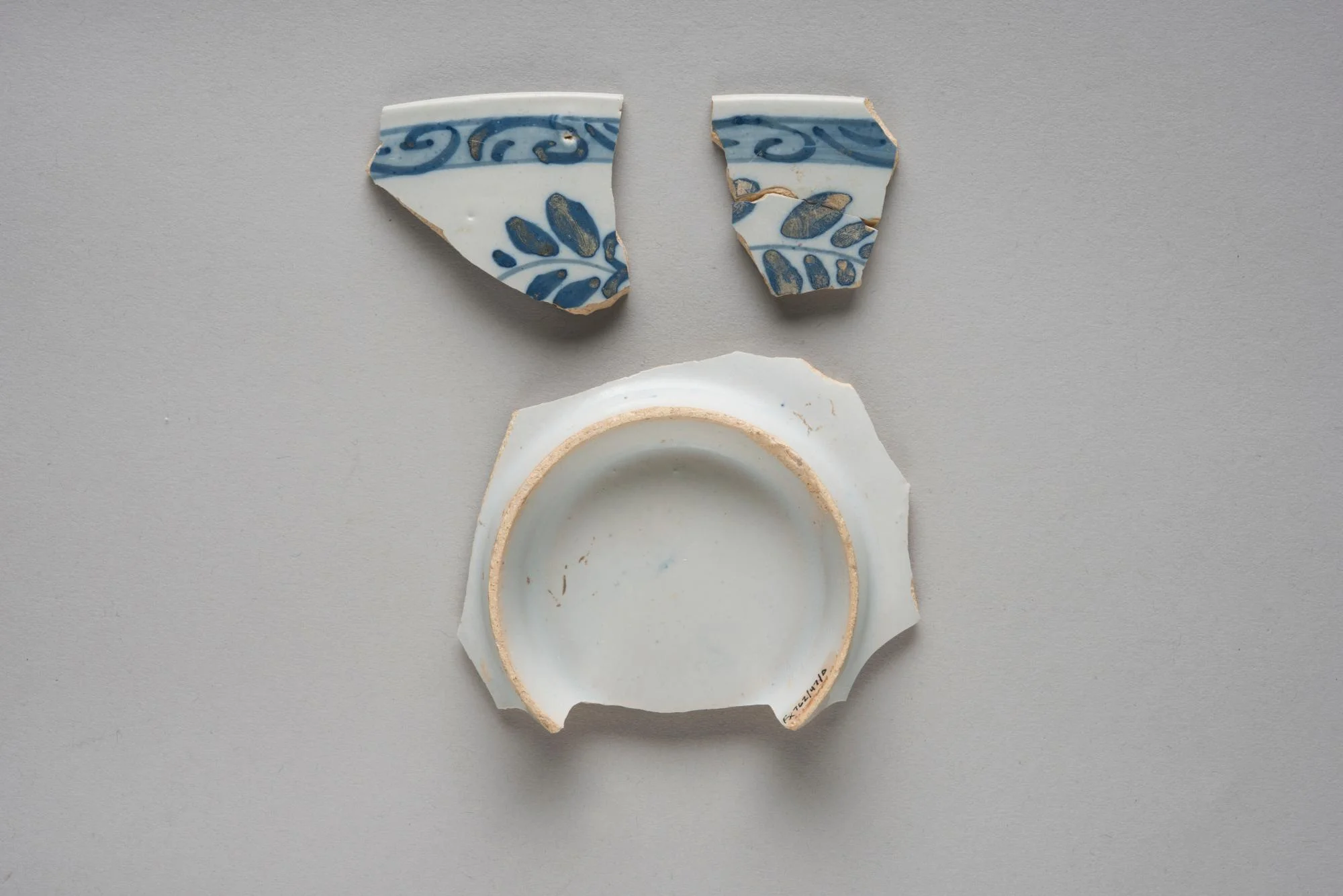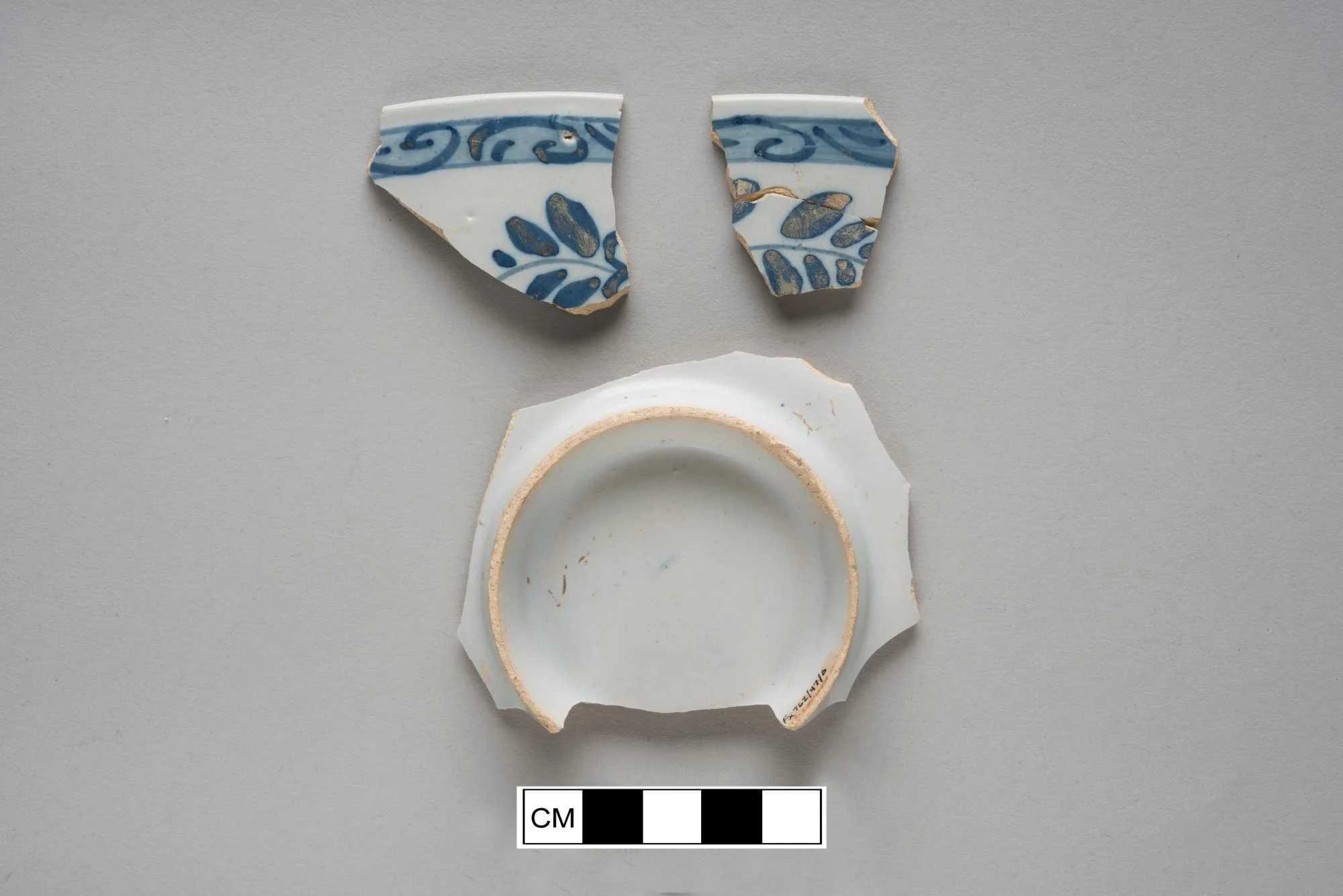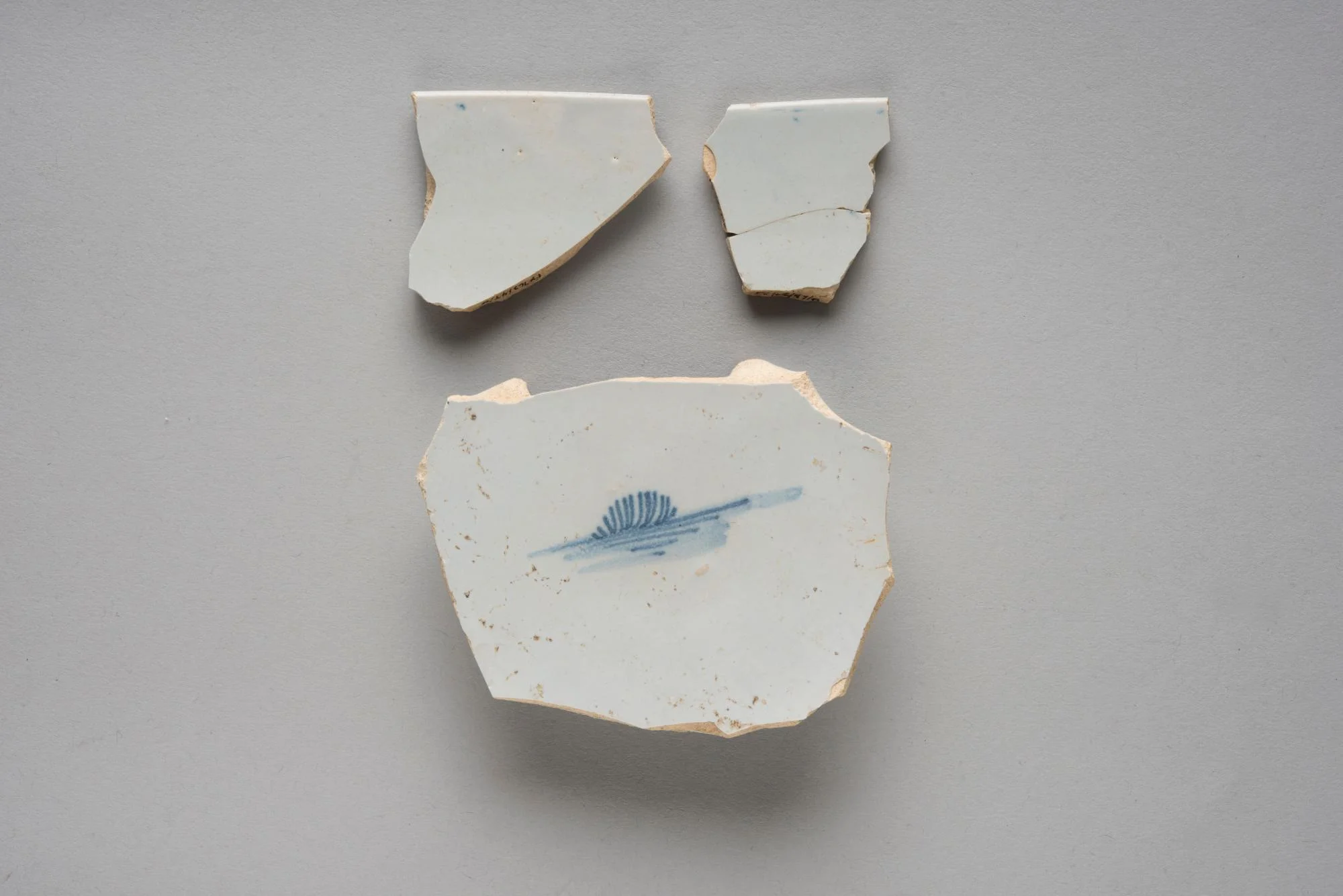Notes
These are fragments of a tin-glazed earthenware punchbowl, with a hand painted botanical band adorning the exterior rim. This ware is often referred to by archaeologists as delftware. The white coloration of the glaze was obtained by adding tin-oxide to a lead glaze. Against this white field, delft was most often decorated with hand painted cobalt blues. These wares mimicked more expensive Chinese export porcelain in both the white color of the glaze and the use of hand painted blue decoration. Ceramics such as these were produced in numerous locations in both Britain and Holland beginning in the seventeenth-century, though production continued through the end of the following century. Generally, delftware was supplanted as a fashionable ceramic as the eighteenth century wore on, being replaced by both porcelains and newer British ceramics, such as white salt glazed stonewares and eventually refined earthenwares like creamware.
Punchbowls such as this highlight the complex nature of interpretation at the House for Families. Punch drinking was a popular activity in the eighteenth century that drew social groups together. Punch recipes varied, but inevitably contained a mixture of spirits, citrus, spices, sugar, and water. Imbibing such alcoholic drinks in group settings served to reinforce themes of comradery, hospitality, and a sense of community among the participants. Punch drinking was also a way to express gentility, as a variety of accoutrements (ladles, strainers, glasses, etc.) and an etiquette for serving (different sized bowls for different occasions, appropriate toasts, etc) evolved over the eighteenth century. Of course, hollow vessels such as this bowl could readily have been repurposed for holding a variety of other consumables, such as soups or stews, for communal serving as well.
Identifying exactly how individuals in the House for Families used this bowl may be impossible to definitively assert, but defining the vessel in such a singular sense is likely beside the point. The object almost certainly was used for multiple purposes over the years before it was broken and disposed. It is clear, however, regardless of what was contained within the object, it was at the center of communal sociability among the residents of the quarter.
Measurements are split between the appropriate diagnostic sherds.
Object Type
Has it Been Conserved?
No
Where Was It Found?
Project Site: House for Families [more details]
Material
Vessel
Manufacturing Technology
Form
Completeness
Decorative Technology
Decorative Notes
Exterior body has scroll band 03 and botanical motif. Interior base has handpainted grass/water central scene.
Date
1600-1775
Country of Origin
Dimensions
85mm x 16mm x 90mm (W x H x L)
Illustration shows object in comparison to the size of a quarter
Weight
47.5 gram(s)
Object Number
1722581. TG V.1
DAACS Number
1722581
Project: House for Families
The structure identified as the “House for Families” on the 1787 Vaughan plan likely housed the majority of the enslaved population living at the Mansion House Farm for much of the second half of the eighteenth century. The building was in existence from circa 1760 until it was demolished in late 1792 or early 1793. The archaeological evidence for the structure consisted of a brick-lined storage cellar (44FX762/40-47) measuring roughly six feet by six feet. Historically the cellar served as a handy trash receptacle once it ceased to be used for its original storage function, and through extensive excavation has yielded an extremely rich assemblage of household refuse. The analysis of these remains offers the opportunity to study important aspects of the daily lives of Mount Vernon's enslaved community.
See All Objects From this Dig


 Ceramic
Ceramic